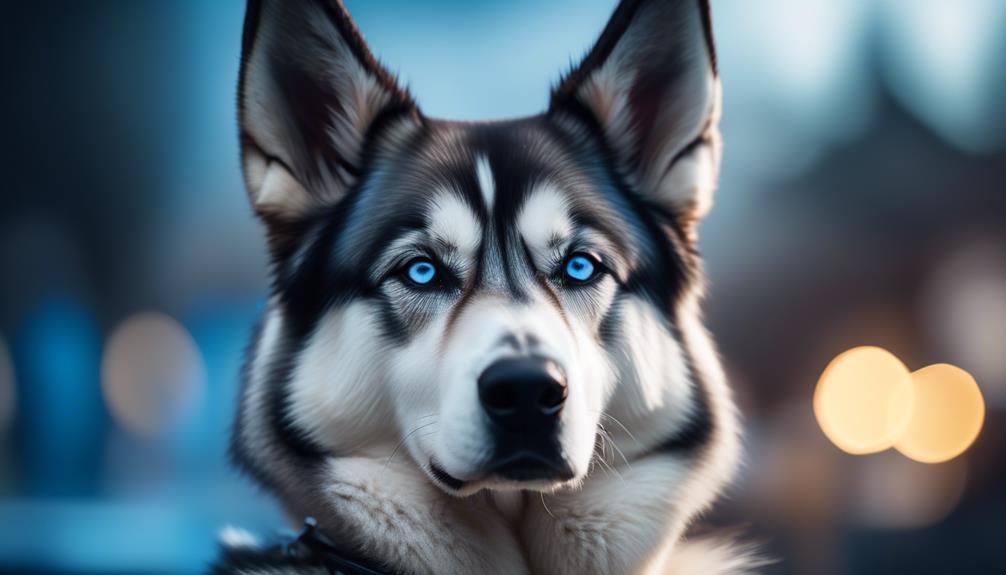
Are you searching for a breed that embodies the best qualities of both the German Shepherd and the Siberian Husky? Well, look no further! The Shepsky is a fascinating crossbreed that combines the intelligence and loyalty of the German Shepherd with the striking beauty and endurance of the Siberian Husky.
But what makes this breed truly unique? What are their characteristics and temperament like? In this discussion, we will uncover the answers to these questions and more, as we delve into the captivating world of Shepskies.
Get ready to discover the fascinating traits and qualities that make Shepskies such a beloved and sought-after breed.
Key Takeaways
- Shepskies are a crossbreed between German Shepherds and Siberian Huskies, and they have a thick double coat in various colors.
- They are prone to health conditions faced by their parent breeds, such as cataracts, hip dysplasia, and bloat, so regular veterinary checkups are important.
- Shepskies require one hour of exercise per day and are not well-suited for apartment living unless they have low energy levels and are well-socialized.
- They are affectionate with their families, good with children, and friendly towards strangers, but they may be protective of their family. Socialization is important for their well-rounded development.
Origin and Size
The Shepsky, a crossbreed between a German Shepherd and a Siberian Husky, originated from the combination of these two breeds. This unique mix results in a medium-sized dog with a height ranging from 22 to 26 inches and a weight of 60 to 80 pounds.
Although not recognized by major kennel clubs as a specific breed, the Shepsky is cherished for its distinctive characteristics. With a lifespan of 7 to 14 years, this breed showcases a thick double coat in various colors.
It’s important to note that the Shepsky is prone to health conditions faced by German Shepherds and Siberian Huskies, such as cataracts, hip dysplasia, and gastric dilatation-volvulus (bloat). Regular veterinary checkups and proper care are crucial in maintaining their well-being.
See another Dog breed profile.
Shetland Sheepdog Dog Breed
Breed Group and Lifespan
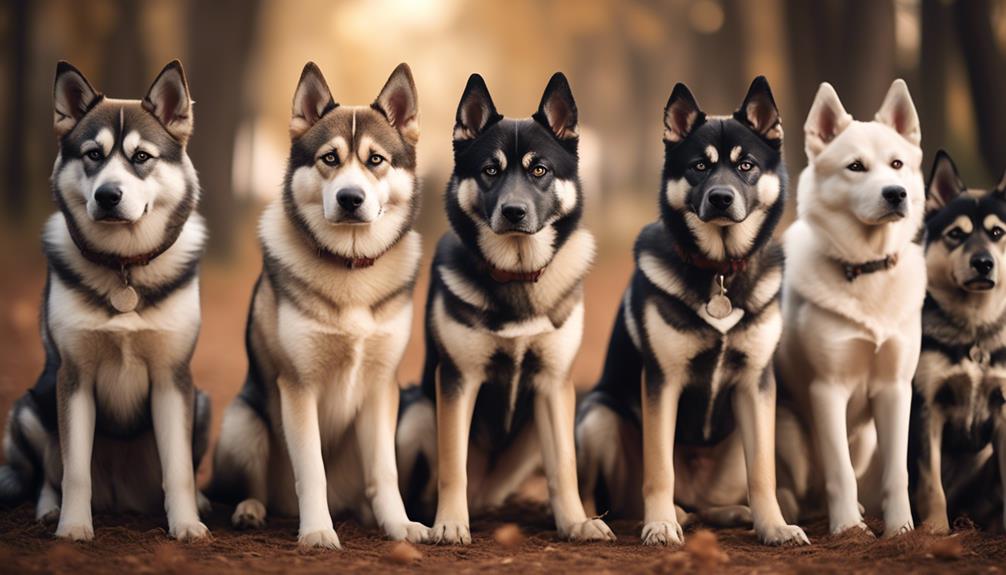
With regards to the Shepsky breed group and lifespan, it’s important to understand their classification and average life expectancy.
The Shepsky isn’t recognized by major kennel clubs and is considered a mixed breed. As a result, they don’t belong to a specific breed group. However, they’re often classified as working dogs due to their intelligence and ability to perform tasks.
In terms of lifespan, Shepskies typically live for about 7 to 14 years. It’s crucial for potential owners to be aware of this range and to provide proper care and attention to ensure the well-being and longevity of their Shepsky companion.
Coat and Health
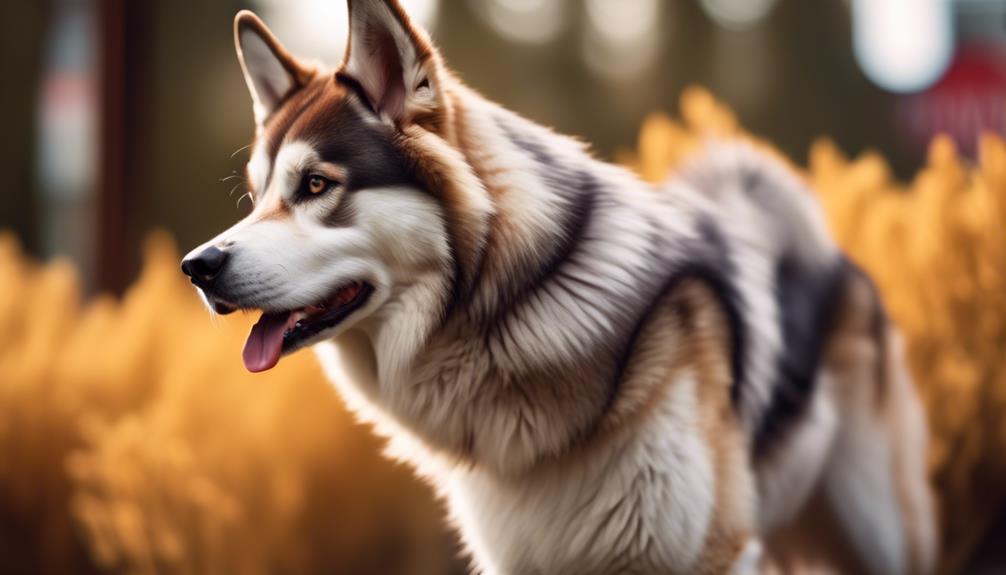
To maintain the health and appearance of your Shepsky, it is important to understand the coat and health considerations of this breed. Shepskies have a thick double coat that comes in various colors, including brown, black, cream, white, red, and blue. Their coats are generally long, dense, and not recommended for people with allergies. Regular brushing is necessary to manage shedding and spread natural oils. Due to their Siberian Husky parentage, Shepskies are well-suited for cold weather. In terms of health, Shepskies may be predisposed to conditions faced by German Shepherds and Siberian Huskies, such as cataracts, corneal dystrophy, progressive retinal atrophy (PRA), hip dysplasia, and elbow dysplasia. Regular veterinary checkups and good care are important to ensure their well-being. Immediate medical attention is needed for gastric dilatation-volvulus (bloat).
| Coat and Health Considerations | |
|---|---|
| Coat | Thick, double |
| coat | |
| Colors | Brown, black, |
| cream, white, | |
| red, blue | |
| Allergies | Not recommended |
| for people with | |
| allergies | |
| Grooming | Regular |
| brushing | |
| to manage | |
| shedding and | |
| spread natural | |
| oils | |
| Cold Weather | Well-suited |
| for cold | |
| weather | |
| Health | Predisposed to |
| Considerations | cataracts, |
| corneal | |
| dystrophy, | |
| PRA, hip | |
| dysplasia, | |
| elbow dysplasia | |
| Veterinary | Regular |
| Checkups | checkups |
| for early | |
| detection of | |
| health concerns | |
| Immediate | Medical |
| Attention | attention |
| needed for | |
| bloat |
Care and Feeding
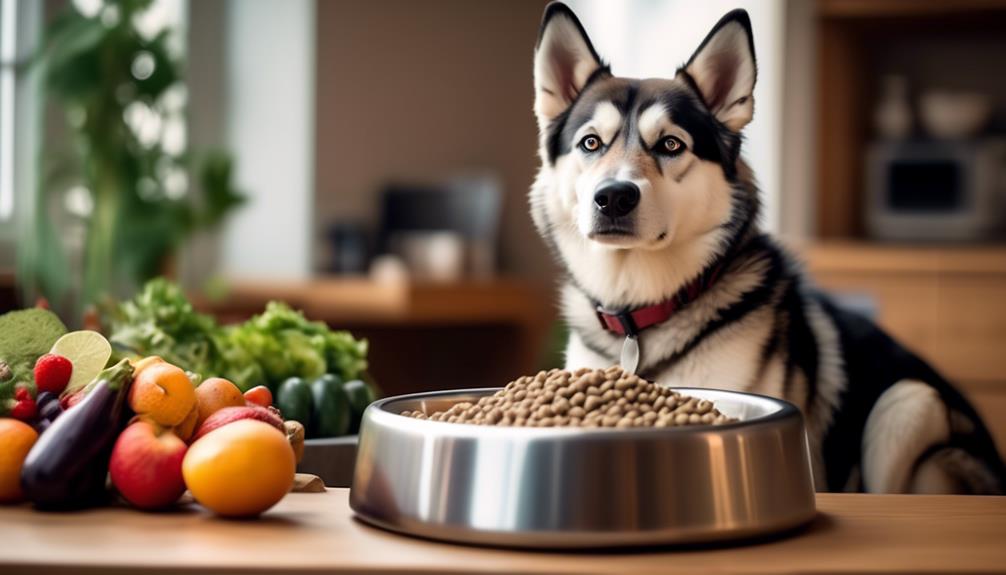
To properly care for and nourish your Shepsky, it’s important to understand their specific needs and dietary requirements. Here are a few key points to consider:
- Consult a veterinarian or professional nutritionist for advice on diet and portion sizes.
- Take special care with feeding and exercising Shepsky puppies to prevent bone disorders.
- Limit treats and serve regular meals to maintain a healthy weight.
- Keep your Shepsky active with at least one hour of exercise per day.
Coat Color and Grooming
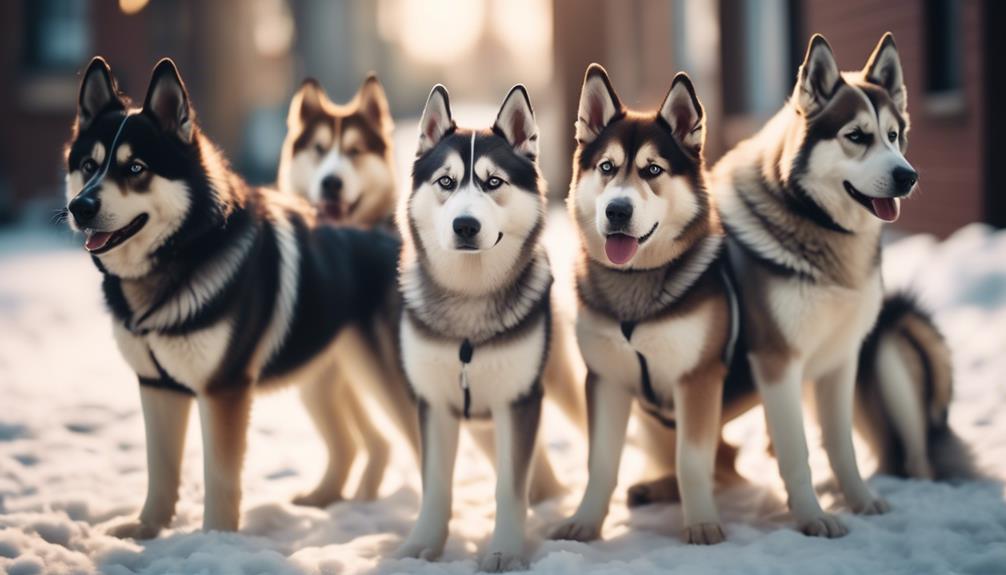
Now let’s shift our focus to the topic of ‘Coat Color and Grooming’ to explore the unique characteristics of the Shepsky’s coat and the grooming needs associated with this mixed breed.
Shepskies have coats that are a mix of their German Shepherd and Siberian Husky parents’ coats and colors. They can come in various colors, including brown, black, cream, white, red, and blue.
The coats are generally long and dense, which means they aren’t recommended for people with allergies. Regular brushing is necessary to manage shedding and to spread natural oils throughout the coat.
Shepskies are well-suited for cold weather due to their Siberian Husky parentage. Overall, grooming for the Shepsky requires regular brushing and limited bathing.
Adaptability and Living Conditions
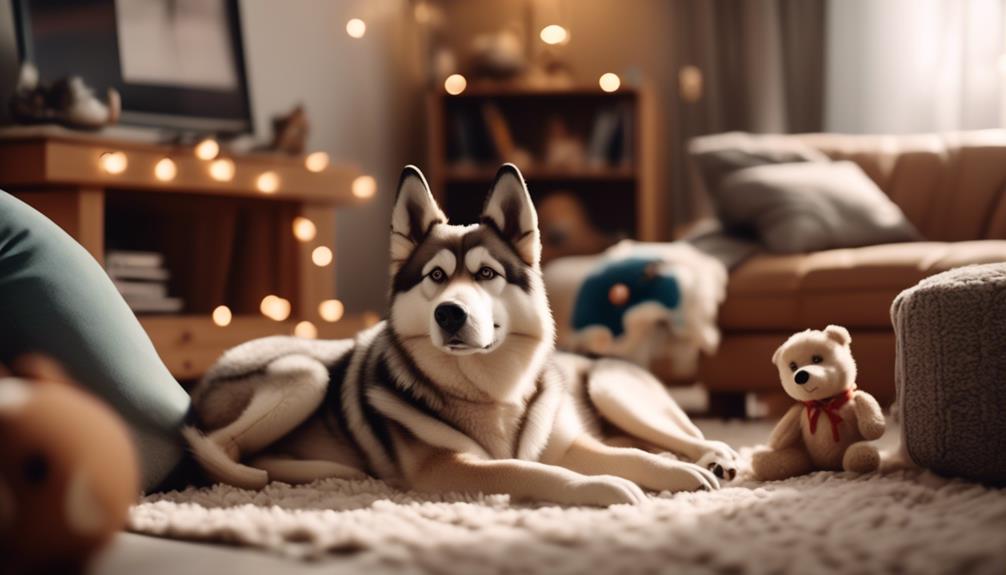
Consider your living conditions and the needs of the Shepsky breed when assessing its adaptability.
The Shepsky can adapt well to apartment living, making it a suitable choice for those who live in smaller spaces. However, it’s important to consider your neighbors when selecting a dog for an apartment, as some dogs may not be well-suited to this type of environment.
The Shepsky is a good choice for novice owners, as it’s known to be friendly and easy to train.
When choosing a dog for an apartment, size isn’t the only factor to consider. Energy levels and space requirements should also be taken into account, as well as qualities such as being quiet, low-energy, and exhibiting good manners.
All-around Friendliness and Socialization
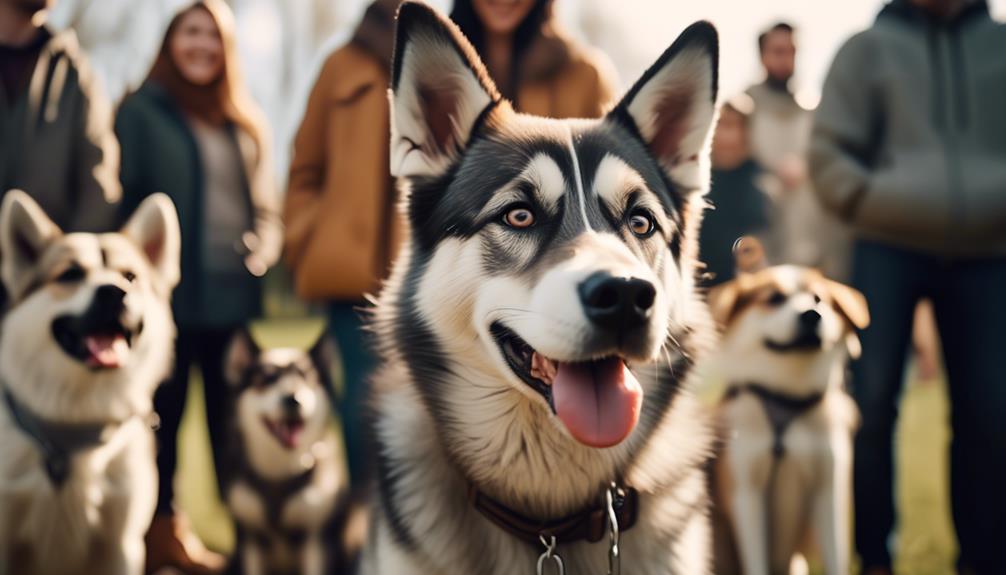
The Shepsky is an affectionate and friendly breed that is known for being great with children and welcoming towards strangers. They are highly social dogs that thrive on companionship and interaction with their family. Socialization is crucial for a well-rounded Shepsky, as it helps them develop good manners and adaptability in various situations. They can be protective of their family and are generally gentle and patient with children when properly trained and exposed to them from a young age. It is important to teach children the proper approach and interaction with dogs and to supervise their interactions. Introducing adult Shepskies to other pets may require some work and the assistance of professional trainers.
| Friendliness and Socialization |
|---|
| Affectionate with family |
| Good with children |
| Friendly towards strangers |
| Protective of their family |
Exercise and Energy Levels
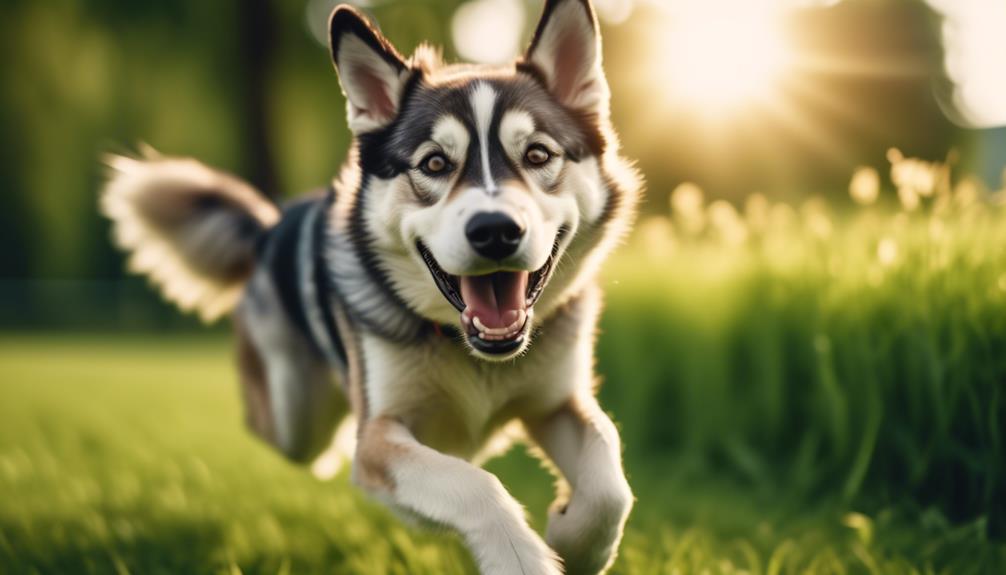
After exploring the Shepsky breed’s friendliness and socialization, let’s now dive into their exercise and energy levels. Here’s what you need to know:
- Dogs have different energy levels.
- High-energy dogs need a significant amount of exercise.
- Low-energy dogs are more like couch potatoes.
- Consider your own activity level and lifestyle when choosing a breed.
It’s important to understand that Shepskies can vary in their energy levels. Some may have high energy and require a lot of exercise to keep them happy and healthy. On the other hand, there are Shepskies who may have lower energy levels and are more laid-back.
When considering a Shepsky, it’s crucial to match their energy level with your own. If you lead an active lifestyle and enjoy outdoor activities, a high-energy Shepsky may be a good fit for you. However, if you prefer a more relaxed and low-key lifestyle, a low-energy Shepsky may be a better match.
Shepsky Personality and Interactions
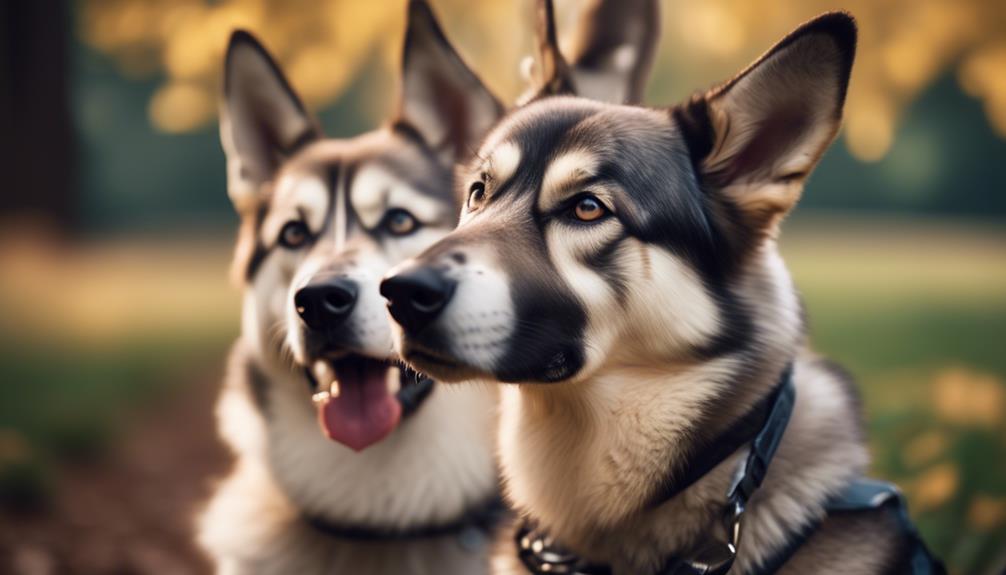
When interacting with a Shepsky, it’s important to establish yourself as the pack leader and provide early socialization for their well-rounded development. These active and playful dogs are medium in size and full of energy. They need jobs and to feel needed in order to thrive.
As pack dogs, they require a strong leader to guide them. With proper training and exposure to children from a young age, Shepskies can be great companions for kids. They’re often gentle and protective of children in their family. However, it’s crucial to teach children the proper approach and interaction with dogs, and to supervise interactions between dogs and young children.
Introducing an adult Shepsky to other pets may require some work and the assistance of professional trainers.
Frequently Asked Questions
Are Shepskies Good With Other Pets in the Household?
Yes, shepskies can be good with other pets in the household, but it may require work and professional trainers to introduce an adult shepsky to other pets. Supervision and proper training are important.
How Do Shepskies Handle Being Left Alone for Long Periods of Time?
Shepskies may struggle with being left alone for long periods of time. They are pack dogs that require a pack leader and thrive on human interaction. Consider their need for companionship and provide appropriate mental and physical stimulation when leaving them alone.
Do Shepskies Have a Strong Prey Drive?
Yes, Shepskies have a strong prey drive. Consider their tendency to chase after prey when making a decision. If you’re concerned about a dog that may leave you behind, it’s important to take this into account.
Are Shepskies Prone to Excessive Barking?
Yes, Shepskies can be prone to excessive barking. Consider their tendency to vocalize and their energy levels. Proper training and socialization can help manage this behavior.
Can Shepskies Be Trained to Perform Specific Tasks or Jobs?
Yes, Shepskies can be trained to perform specific tasks or jobs. They are active and playful, need jobs and a pack leader. Early socialization is important for their development. With proper training, they can excel in various tasks.
Conclusion
In conclusion, the Shepsky is a unique and energetic breed that makes a wonderful furry addition to any family. With their mix of traits from the German Shepherd and Siberian Husky, they’re beautiful, intelligent, and friendly dogs.
They adapt well to apartment living, but require regular exercise and grooming. Their all-around friendliness and socialization needs make them great companions for families with children.
Overall, the Shepsky is a fantastic breed that brings joy and love to any home.




